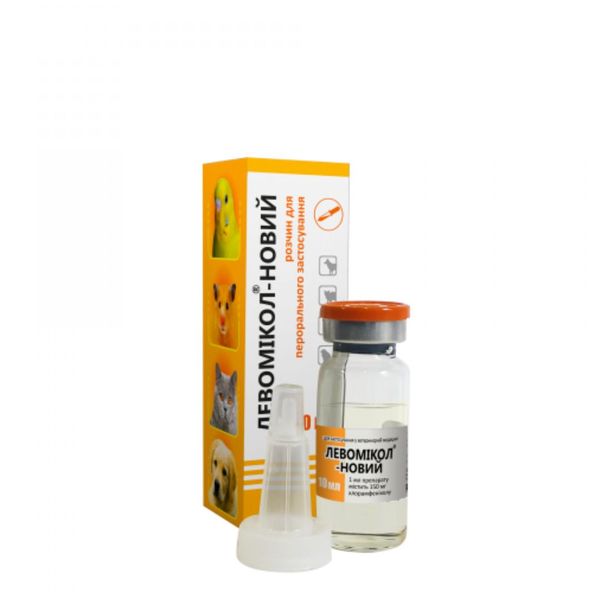|
Quantity
|
Out of stock
|
||
|
|
|||
Description
Transparent, slightly viscous liquid from light yellow to yellow color.
Storage
1 ml of the drug contains the active substance:
chloramphenicol - 150 mg.
Excipients: benzyl alcohol, propylene glycol.
Pharmacological properties
ATS vet classification code QJ01 – antibacterial veterinary drugs for systemic use. QJ01BA01 – Chloramphenicol.
Chloramphenicol is a synthetic antibiotic with a wide spectrum of antimicrobial action, active against most gram-positive and gram-negative microorganisms, such as: Staphylococcus aureus, Streptococcuspyogenes, Shigella spp., Brucella spp., Pasteurella tularensis, Escherichia coli, Proteus spp., Salmonella spp., Bacillusanthracis, Corynebacterium pyogenes, Erysipelothrix rhusiopathiae, as well as rickettsia (Rickettsia spp.), mycoplasma (Mycoplasma spp.), chlamydia (Chlamydia spp.). The action of chloramphenicol consists in binding to the 50S ribosomal subunit, which leads to inhibition of bacterial protein synthesis.
After parenteral administration of the drug, the therapeutic level of the antibiotic in the blood is reached within a short time. The antibiotic easily penetrates into various tissues and body fluids, including in the joints, tissues of the eye, uterus. The maximum concentration of chloramphenicol in the blood is reached 1-3 hours after parenteral administration. It is excreted from the body, mainly by the kidneys, partly in pure form and in the form of complex compounds with glucuronic acid.
Application
Treatment of poultry, dogs, cats, puppies, kittens, fur animals, patients with dyspepsia, gastroenteritis, salmonellosis, colibacteriosis, pasteurellosis, bronchopneumonia, pneumonia, arthritis, abscess, postoperative and postpartum infections, secondary bacterial infections in viral diseases caused by microorganisms, sensitive to chloramphenicol.
Dosage
Orally once a day for 3-5 days, depending on the course of the disease, in the following doses per head:
Poultry 0.08-0.14 ml of the drug (3-5 drops);
Dogs, cats, fur animals
(foxes, minks, nutria, muskrats) 1.0-2.0 ml of the drug;
Puppies 0.08-0.22 ml of the drug (3-8 drops);
Kittens 0.08-0.14 ml of the drug (3-5 drops);
Rabbits, guinea pigs, 0.2-0.4 ml of the drug (8-15 drops);
chinchillas
Hamsters, rats, mice 0.08-0.14 ml of the drug (3-5 drops).
and birds (parrots, canaries)
Intramuscularly at a dose of 0.1-0.2 ml of the drug per 1 kg of the animal's body weight once a day with an interval of 1-2 days. If repeated injections are necessary, they are made in other points of the body.
Contraindication
Increased individual sensitivity to chloramphenicol.
Do not use in animals with impaired liver function.
Do not use simultaneously with quinolone antibiotics, ristomycin, penicillin.
Do not use in productive animals.
Reservation
With simultaneous use with sulfonamides, inhibition of hematopoiesis is possible.
Use with caution in newborn animals.
With intramuscular use, local reactions may occur - swelling and pain at the injection site.
Release form
Bottles made of glass, closed with rubber caps under an aluminum break-in of 10, 50, 100 ml.
Storage
A dry, dark place inaccessible to children at a temperature of 5 ° to 25 °C.
Expiry date - 3 years. After the first withdrawal from the bottle, the drug should be used within 4 days, provided it is stored in a dark place at a temperature of 5 ° to 15 °C.
For use in veterinary medicine!
































